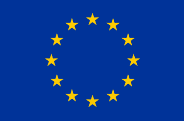
Safe non-food consumer Products in the EU and China
China is the largest exporter of goods to the EU, but also holds the record for exporting the highest percentage of defective or dangerous products, with 53% of overall alerts registered on Safety Gate/RAPEX, the EU’s product safety alert system.
The product categories and types of issues have remained largely unchanged for many years with toys, electrical appliances, childcare articles making up a significant percentage of the total number of alerts.
The product safety alerts remained unchanged for many years. The four most notified risks of injuries are choking, chemical poisoning, electric shock and fires/burns. This means that although much work has been undertaken in both the EU and China to tackle these problems, much more still needs to be done.
In relation to the products listed above, the most frequent types of risk in Safety Gate/RAPEX alerts in 2021 were:
If an economic operator suspects they have placed an unsafe product on the EU market, they have an obligation to immediately notify relevant national market surveillance authorities about the details and the corrective actions they intend to take. This can be done by:
Economic operator is a broad term to describe all commercial entities (ranging from individuals to international corporations) who are involved in the supply chain for products. This can be the manufacturer, importer, distributor or authorized representative, and each has specific responsibilities in relation to the product that they supply.
When a product is placed on the EU market, the economic operator who does this takes ultimate responsibility for the safety and conformity of it. Since market surveillance is carried out by reference to technical documentation as well as the product, there must be an economic operator within the EU who holds this documentation so it can be provided to the authority upon request. Further if the product is found to be unsafe, the actions such as recalls may be necessary, and again the relevant economic operator has responsibility for this.
It will depend on the contractual arrangements that a manufacturer has with his customer in the EU.
European authorities can, and will, take any kind of necessary legal action against the importer of the product or in the case of online trade, against the Chinese manufacturer’s representative in the EU.
This may include banning of sales or recalling unsafe products, which in turn can lead the European importer to pursue the Chinese manufacturer for all the losses incurred.

This website was created and maintained with the financial support of the European Union. Its contents are the sole responsibility of SPEAC project and do not necessarily reflect the views of the European Union.